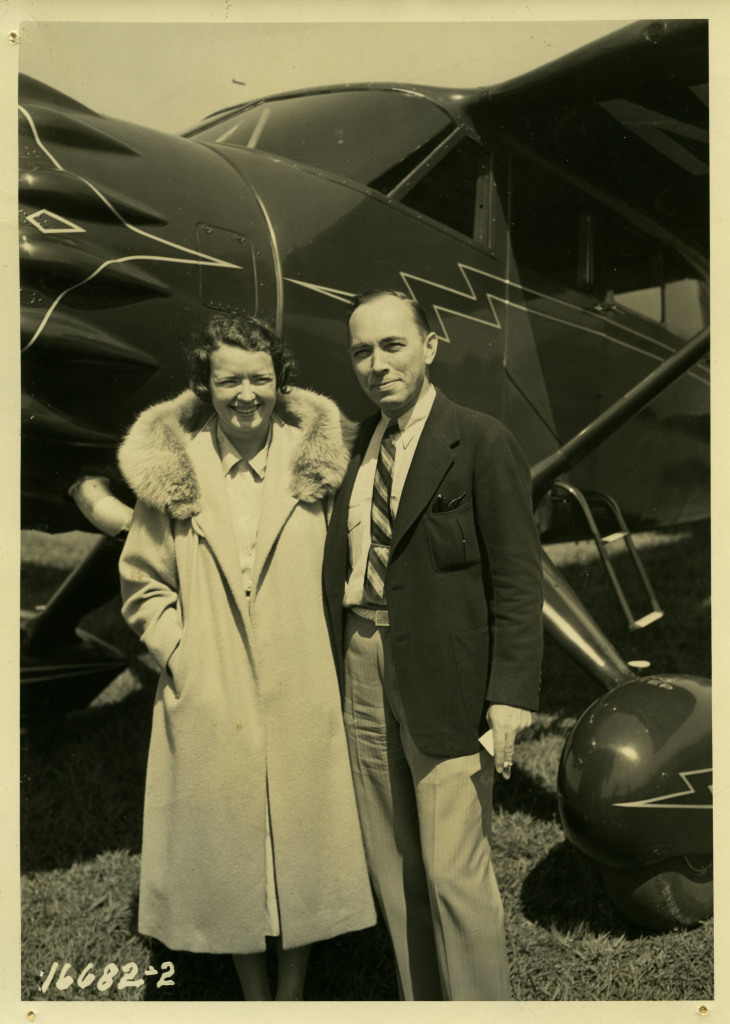The following article was written by former Detre Library & Archives Archivist Theresa Rea and originally appeared in the Winter 2014-15 edition of Western Pennsylvania History magazine.
The popularity of civil aviation became widespread between the first and second World Wars. Thousands of spectators flocked to watch the races and stunts of skilled pilots, both male and female, hailing from every corner of the United States. In a predominately male sport, the Western Pennsylvania region can boast of several pioneer aviatrixes during this period. One native star of the sky was Helen MacCloskey.

Helen was born in Pittsburgh to James and Helen MacCloskey in 1909. She attended Schenley High School and went on to earn a B.A. in English Literature from Wellesley College in 1929. While continuing her studies at Columbia University, Helen took her first flying lesson with flight instructor Jack Morris. By 1931, Helen owned her own plane and worked for Morris at the Pittsburgh Airport as a flying instructor and charter pilot. By the age of 22, she had her private license, a transport license, and a limited commercial license.
For the next several years, Helen participated in air races throughout the United States, including Miami Air Races, Treasure Hunts, aerobatic, bomb dropping, precision flying, landing contests, and aerial tag derbies — many of which she won, placed, or held a world record. In the 1932 National Air Races, Helen flew a two-seat airplane christened “Miss Teaberry” for the Cord Cup. The plane was named for the chewing gum manufactured by Pittsburgh’s D.L. Clark Candy Company. A press release announced “A powerful Monocoupe plane, ‘Miss Teaberry,’ has been entered by the Clark Chewing Gum Company in the seven-day Cord Cup Race scheduled for Aug. 21-27.” According to The Pittsburgh Press, which followed many of her races, she finished fifth in the Eastern Division.

As for the thrill and experience of racing, Helen described it as follows:
“The starters flag up—throttles wide open and your ship straining as you press your heels in the brakes. Down it flashes & you concentrate every thought on a clean takeoff—get the weight off the ground—now—and with both eyes straight ahead you are still watching how the other job got away. The first turn—down goes your left wing, and in inches below it another drops behind. Easy now, out of your turn without losing speed, and on thru the endless laps—heart rending seconds when you gain on the ship in front of you, grudgingly edge outside him as you approach another turn. The last mad dash across the finish line, with the sweat pouring into your eyes, straining pulses pounding down—wrist bent on a throttle…it’s over. You zoom gayly into the wide sky, dangerous but fun, sheer animal excitement…”
Prior to radio navigation, many pilots of small aircraft often used landmarks for navigation. In 1936, Helen was handpicked (along with prominent pilots Louise Thaden and Nancy Harkness, and later Blanch Noyes and Helen Richey) as representatives for the air marking program by Phoebe Omile, an official of the National Advisory Committee for Aeronautics. The task of the air-marking pilots was to paint the name of a local airport, its direction, or a name of a town with an arrow indicating on the roofs of buildings to aid pilot’s navigation. Through their efforts, air markers could be seen throughout the United States until World War II.

In May of 1937, Helen married Howard Rough, a Gulf Oil pilot from Dearborn, Mich., who was the incoming assistant director of the Bureau of Air Commerce. During World War II, Helen set up and helped to organize the Civil Air Patrol, planning application procedures and pilot training. In 1944, she served briefly as the special assistant to executive for Women Air Service Pilots (WASPs), for Nancy Love in Cincinnati. She continued to fly with her husband into the 1950s.
More of Helen’s story and other stories of Western Pennsylvania’s pioneering women can be found in the Detre Library & Archives at the Senator John Heinz History Center.
All images are from the MacCloskey Family Papers and Photographs, 2014.0086, Detre Library & Archives, Senator John Heinz History Center.
